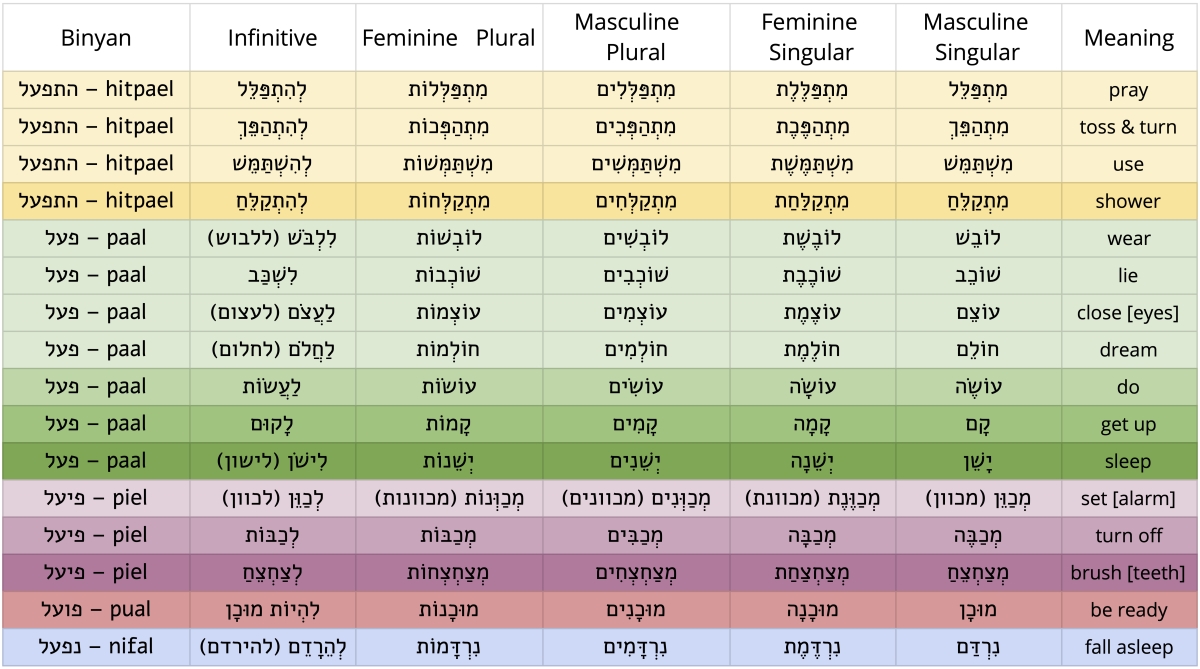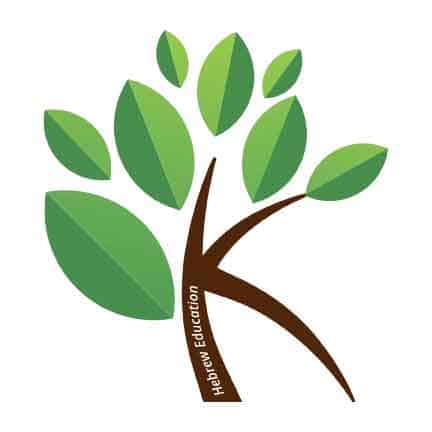Over the past few weeks, our daily everyday Hebrew Sentence Series videos have focused on going to bed in Hebrew – getting ready for bed, and falling asleep. If you’re new here – welcome! – you can check out review posts one, two, three and four before reading this one. As always, I want to start with a reminder of the point of these everyday Hebrew sentence lessons.
These sentence videos help you learn Hebrew words and phrases that you can use in everyday Hebrew conversation. The way the Hebrew sentences are presented varies each week to focus on a particular action, and that’s to help you learn the language in context. The context helps you learn Hebrew sentence structure, what prepositions to use with what verbs, what verb conjugations to use, the genders of nouns, and so much more. You’re learning to actually use the words, instead of being caught up in grammar and mechanics.
Sounds good? Yes? Perfect! So, BO’U NATCHIL בואו נתחיל – let’s get started!
There were a lot of new Hebrew verbs in the last three everyday Hebrew sentence series, so I’ve organized them for you in the chart below. Note that the meanings of verbs can vary depending on the context, so the meanings I included in the chart are the ones from the past three series.

🔵 The highlights are to show you how the various conjugation patterns can vary within each binyan, and the parentheses show you how the verbs would be spelled without nikkud (Hebrew vowels).
🟢 You know of two verbs that mean “close” – OTSEM עוצם and SOGER סוגר; OTSEM עוצם is used specifically for eyes, and you would use SOGER סוגר for everything else.
🔵 The verb MECHAVEN מכוון has multiple meanings, beyond “setting” something like an alarm; it can also mean “aim,” “direct,” or “adjust,” among others.
🟢 The Hebrew verb METSACHTSEACH מצחצח (I know, I know) actually means “polish,” but we use it to mean “brush” when specifically talking about brushing teeth; you would not use this verb for brushing hair, for example, but you would use it to talk about polishing shoes.
🔵 Pual verbs don’t have infinitives, so we use the verb “to be,” LIHYOT להיות plus the verb to form an infinitive. This way, LIHYOT MUCHAN להיות מוכן literally means “to be ready.”
Exercise 1: Hebrew Verbs Match Up
Match each Hebrew verb with the sentence or phrase that it goes with.
Exercise 2: Unscrambling Hebrew Sentences
In this exercise, you’ll see various jumbled Hebrew sentences from the past three series, but they’ll use different pronouns (and of course the matching verb). Your task is to unscramble each sentence.
Hebrew Preposition Notes
🔵 On their own, every Hebrew preposition has a meaning; for example, AL על means “on” or “about,” and B– ב means “in” or “at.” The one exception to this would be ET את, the definite direct object marker that doesn’t have an English translation (learn more here).
🟢 Hebrew verbs are often followed by prepositions, but in many cases, the preposition doesn’t retain its meaning when used with the verb. For example, the verb LEHISHTAMESH להשתמש is followed by the preposition B- ב, as in LEHISHTAMESH BASHERUTIM להשתמש בשירותים, “to use the bathroom.” In English, we don’t say “to use in the bathroom” or “to use at the bathroom,” so this is an example of what I mean by the preposition not retaining its meaning. It doesn’t mean anything here – you just have to use it for your sentence to be correct in Hebrew.
🔵 I go over prepositions in these five videos on YouTube, and you can also get my Guide to Hebrew Prepositions from my shop.
Exercise 3: Hebrew Prepositions
In this exercise, you’ll choose the Hebrew translation of different phrases that uses the correct preposition.
Exercise 4: Hebrew Listening Comprehension
In this exercise, you will hear Hebrew sentences that use words from the everyday Hebrew sentence series 13-15 (along with some words from earlier series). Translate each Hebrew sentence into English.
DISCLAIMER: I could only input one correct option, even though you might be able to translate the sentence correctly in a number of ways. For example, הִיא מַחֲזִירָה אֶת הָעֵט could correctly be translated as: (1) She puts the pen back (2) She returns the pen (3) She puts back the pen (4) She is putting back the pen (5) She is putting the pen back or (6) She is returning the pen. If I put in option 1, but you typed in any of the other choices, the system will mark it as incorrect, but you go ahead and give yourself those points anyway!
To try and keep it simple, all of the answers are in the simple present (i.e. you write, I close).
Do you still have questions about the lessons from the last three everyday Hebrew sentence series (getting ready for bed, and going to sleep parts 1 and 2)? If so, let me know what you’re still wondering about in the comments!
Zehu זהו – that’s all folks!
I hope you enjoyed these Hebrew exercises and found them helpful, and make sure you’re subscribed to my channel so you don’t miss a single sentence!
Until next time,

If you liked this post, please do at least 1 thing from this list:
📝 leave a comment below
🥰 share it on social media
📲 email or text the link to this post to a friend
☕️ buy me a “thank you” coffee
💻 join the Patreon community for exclusive content
Thank you! 💙

Hebrew Verbs Lesson #14 – Conjugating Verbs Answer Key
If you've been keeping up with my Hebrew verbs lessons, you know we've learned both the present...


